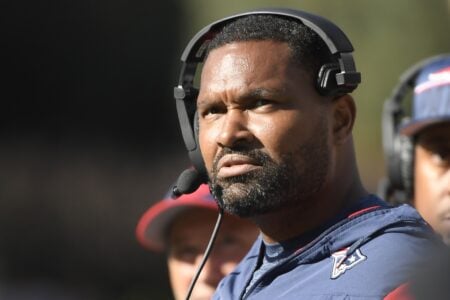Richard Camembert
Third String But Playing on Special Teams
- Joined
- Aug 19, 2010
- Messages
- 651
- Reaction score
- 361
Registered Members experience this forum ad and noise-free.
CLICK HERE to Register for a free account and login for a smoother ad-free experience. It's easy, and only takes a few moments.Don't see any comment on whether the differences are significant so even though this paper might have face validity it's impossible to see if the differences are meaningful.
With respect, there is no description of any such correlation in the article. Let alone a discussion of whether the correlation is significant. (A correlation is the result of a mathematical operation, and there's no math here.). So they aren't demonstrating anything, just saying that it's looks like there could be a difference. This is one reason why this article is weak.It doesn't appear to me that this analysis is making any cause-and-effect claims, but merely demonstrating that there appears to be a sufficiently significant correlation to consider turf type as a contributing factor in lower leg injuries.
With respect, there is no description of any such correlation in the article. Let alone a discussion of whether the correlation is significant. (A correlation is the result of a mathematical operation, and there's no math here.). So they aren't demonstrating anything, just saying that it's looks like there could be a difference. This is one reason why this article is weak.
The difference in Jets and Giants rates in the same stadium suggests that other factors besides the turf probably play larger roles.
I think the biggest issue is that the injuries may not be turf related. If someone gets a concussion due to a helmet to helmet hit it doesn't say much about the turf. If there was a way to sift out injuries like that it might be more revealing.
Sort of. Looks like they just averaged the number of injuries by stadium and rank ordered them. You would see language about the Field Turf group having significantly more injuries, with a p value reflecting how confident they are in their assertion. In fact, by the eyeball test, since you can see that a lot of the ranges overlap and some of the highest injury rates are from grass fields, I would say that there is likely NO significant difference. This might reflect that the fact that football itself is very dangerous is more important by far in the injury mechanism than the specific field composition.Well, it's far from being a scientific study that's being submitted for peer review, but the published results of their analysis appear to show a correlation whether the authors explicitly describe or discuss it as such.
Also, while it's true that the authors didn't publish any mathematical operations they may have performed, the fact that they're published charts are quantified seems to suggest that they must have performed some mathematical operations on the data at some point.
Probably small sample size. A couple guys got hurt on one team, not the other, and it's not important enough to draw any conclusion.The difference in Jets and Giants rates in the same stadium suggests that other factors besides the turf probably play larger roles.
I think the biggest issue is that the injuries may not be turf related. If someone gets a concussion due to a helmet to helmet hit it doesn't say much about the turf. If there was a way to sift out injuries like that it might be more revealing.
About to get worse?
since one would expect that the home team would be more familiar with the quirks of the stadium (where the bad seams in the turf are and the like) that could skew things even more.














